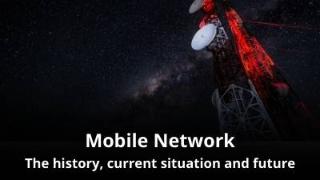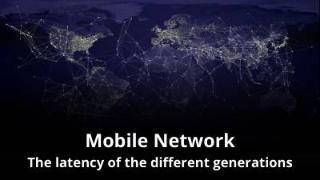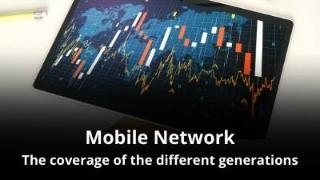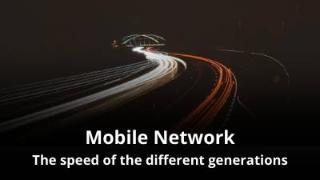The Speed of the different Mobile Networks.
Network speed, often referred to as data transfer speed or data throughput, represents how quickly data can be transmitted between devices over mobile networks. It’s typically measured in bits per second (bps), kilobits per second (kbps), megabits per second (Mbps), or gigabits per second (Gbps). When setting up your Mobile Virtual Network Operator (MVNO), understanding network speed is crucial as it directly impacts the user experience.
What is the Speed of the different Mobile Networks?
- Why does the Speed of the Mobile Network matter for Your MVNO?
- What is the Speed of the different Mobile Networks?
- What is the Speed of the 2G (Second Generation) Mobile Network?
- What is the Speed of the 3G (Third Generation) Mobile Network?
- What is the Speed of the 4G (Fourth Generation) Mobile Network?
- What is the Speed of the 5G (Fifth Generation) Mobile Network?
- What is the Speed of the 6G (sixth Generation) Mobile Network?
- Summary of is the Speed of Mobile Networks
Why does the Speed of the Mobile Network matter for Your MVNO?
Customer Experience
Reliable coverage ensures a positive user experience. As a result customers in areas with weak signals may switch to competitors if the service quality is poor.
Market Reach
Understanding coverage helps you identify your target market. Also Consider the demographics and geographical locations of your potential customers when selecting network technologies.
Service Offerings
Coverage influences the services you can offer. Because if your MVNO operates in areas with comprehensive 4G or 5G coverage, you can provide high-speed data services, attracting tech-savvy customers.
Roaming Agreements
Consider roaming agreements with operators offering compatible coverage. In short Roaming agreements expand your service reach globally.
Cost Considerations
Building your MVNO on networks with extensive coverage might be costlier. Therefor balance cost and coverage to optimize your business model.
Future Expansion
Expanding your MVNO’s services to new regions? In this case understanding the coverage landscape is essential for strategic growth.
What is the Speed of the different Mobile Network?
1. What is the Speed of the 2G (Second Generation) Mobile Network?
2. What is the Speed of the 3G (Third Generation) Mobile Network?
3. What is the Speed of the 4G (Fourth Generation) Mobile Network?
4. What is the Speed of the 5G (Fifth Generation) Mobile Network?
5. What is the Speed of the 6G (sixth Generation) Mobile Network?

What is the Speed of the 2G (Second Generation) Mobile Network?

Speed
2G networks offer data transfer speeds ranging from 9.6 kbps to 384 kbps.
Significance for Your MVNO
In short 2G networks were primarily designed for voice calls and text messaging. While they can handle basic data services like emails and basic browsing, the speeds are relatively slow, making them unsuitable for modern data-intensive applications.
What is the Speed of the 3G (Third Generation) Mobile Network?

Speed
3G networks provide data transfer speeds from 384 kbps to several Mbps, with HSPA+ offering up to 42 Mbps.
Significance for Your MVNO
Significantly improved data speeds, enabling better internet browsing, video streaming, and multimedia applications are enabled with 3G networks. Thus an improvement over 2G, 3G speeds might not meet the demands of high-definition video streaming and other data-intensive services.
What is the Speed of the 4G (Fourth Generation) Mobile Network?

Speed
4G networks offer data transfer speeds ranging from 100 Mbps to 1 Gbps, with LTE-A providing speeds up to 1 Gbps or more.
Significance for Your MVNO
Revolutionized mobile internet, making high-definition video streaming, online gaming, and other data-intensive applications seamless are made possible with 4G networks. As a result the increased speed and lower latency enhanced the user experience, leading to widespread adoption of 4G services.
What is the Speed of the 5G (Fifth Generation) Mobile Network?

Speed
5G networks provide data transfer speeds from 1 Gbps to 100 Gbps or more, with mmWave technology offering multi-Gbps speeds.
Significance for Your MVNO
Representing a significant leap in speed, enabling real-time applications like augmented reality, virtual reality, and ultra-high-definition video streaming with 5G networks. In summary the low latency and high throughput of 5G networks open doors to innovative services and applications.
What is the Speed of the 6G (Sixth Generation) Mobile Network?

Expected Speed
6G networks are anticipated to provide Terabits per second (Tbps) speeds, enabling unprecedented data transfer rates.
Significance for Your MVNO
While 6G technology is still in the conceptual phase, researchers aim to achieve terabit speeds, facilitating instant data transmission and empowering futuristic applications. 6G networks are expected to support technologies like holographic communication and advanced AI applications, demanding enormous data bandwidth.
Summary of the Speed of Mobile Networks
Considering network speed is vital when setting up your MVNO. So understanding the demands of your target market and selecting network technologies that offer the required speed ensures your customers have a seamless and enjoyable experience, leading to customer satisfaction and business success.








